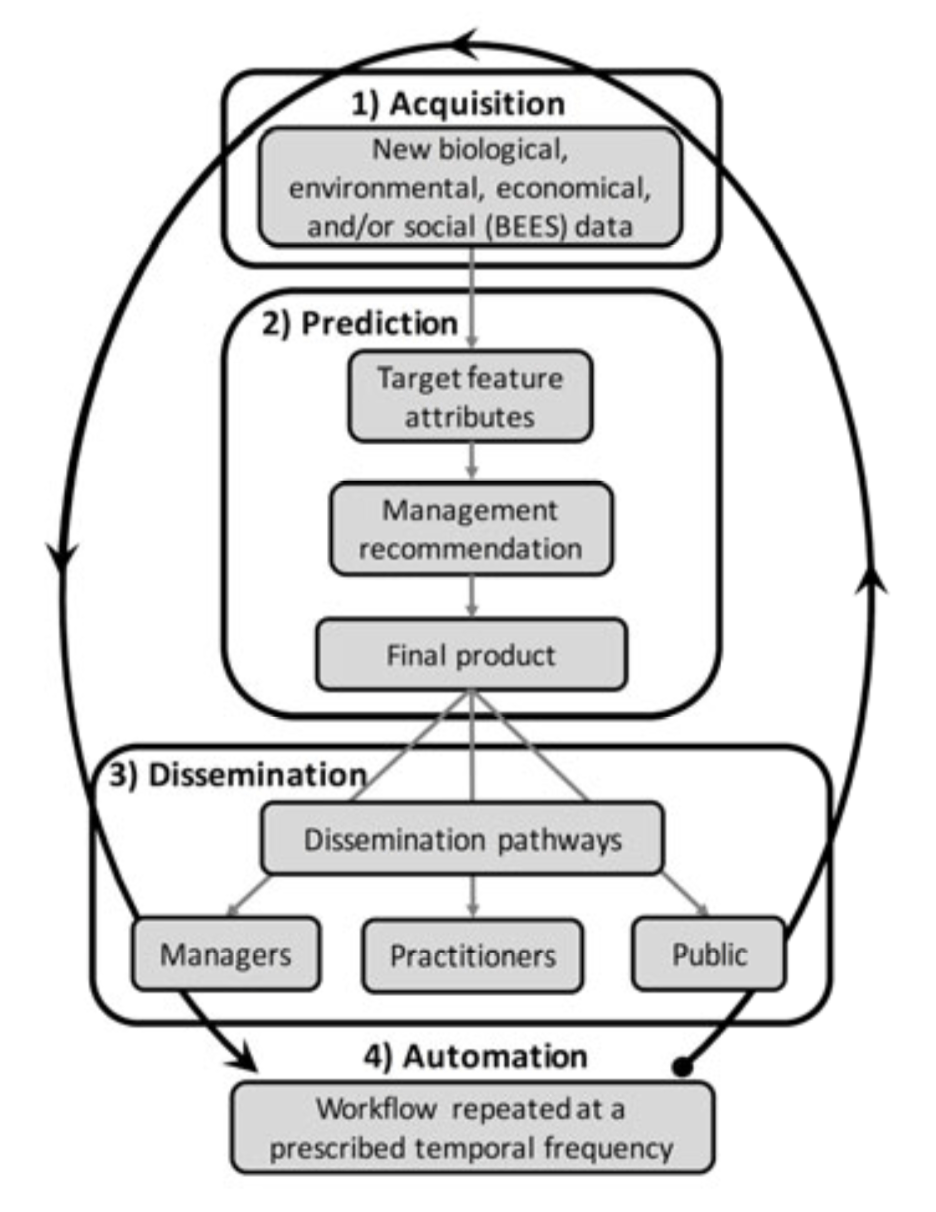When building an operational tool, building the ecological models is only part of the equation. Equally important is ensuring that we have operational tools and regular predictions for use in management. Welch et al. 2018 explore the operational-side of the EcoCast tool, including potential pitfalls and solutions towards decision making. The paper came out in early view in the Journal of Applied Ecology and there is a discussion on the steps involved in creating fisheries nowcasts in the Conversation.
Figure 1. The four stages of operationalizing a dynamic management tool (hollow fill) and internal components (grey fill). The framework is relevant to operationalizing tools at one point in time and does not encompass tool updates as new data become available.
Dynamic management (DM) is a novel approach to spatial management that aligns scales of environmental variability, animal movement and human uses. While static approaches to spatial management rely on one-time assessments of biological, environmental, economic, and/or social conditions, dynamic approaches repeatedly assess conditions to produce regularly updated management recommendations. Owing to this complexity, particularly regarding operational challenges, examples of applied DM are rare. To implement DM, scientific methodologies are operationalized into tools, i.e. self-contained workflows that run automatically at a prescribed temporal frequency (e.g. daily, weekly, monthly).
In this paper, Welch et al. 2018 present a start-to-finish framework for operationalizing DM tools, consisting of four stages: Acquisition, Prediction, Dissemination, and Automation. We illustrate this operationalization framework using an applied DM tool as a case-study.
Our DM tool operates in near real-time and was designed to maximize target catch and minimize bycatch of non-target and protected species in a US-based commercial fishery. It is important to quantify the sensitivity of DM tools to missing data, because dissemination streams for observed (i.e. remotely sensed or directly sampled) data can experience delays or gaps. To address this issue, we perform a detailed example sensitivity analysis using our case-study tool.
Dynamic management tools are emerging as viable management solutions to accommodate the biological, environmental, economic, and social variability in our fundamentally dynamic world. Our four-stage operationalization framework and case study can facilitate the implementation of DM tools for a wide array of resource and disturbance management objectives.
Welch, H., E.L. Hazen, S.J. Bograd, M.G. Jacox, S. Brodie, K.S. Scales, D. Robinson, L. Dewitt, and R. Lewison. 2018. Practical considerations for operationalizing dynamic management tools. Journal of Applied Ecology. DOI: 10.1111/1365-2664.13281 PDF

